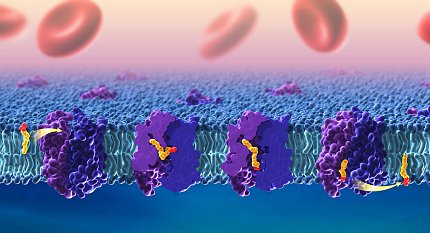Researchers Develop Model for How the Brain Acquires Omega-3 Fatty Acids

Photo: Ethan Tyler/NIH Medical Arts
NIH researchers and colleagues have developed a zebrafish model that provides new insight into how the brain acquires essential omega-3 fatty acids, including docosahexaenoic acid (DHA) and linolenic acid.
Their findings, published in Nature Communications, have the potential to improve understanding of lipid transport across the blood-brain barrier and of disruptions in this process that can lead to birth defects or neurological conditions. The model may also enable researchers to design drug molecules that are capable of directly reaching the brain.
Omega-3 fatty acids are considered essential because the body cannot make them and must obtain them through foods, such as fish, nuts and seeds. DHA levels are especially high in the brain and important for a healthy nervous system. Infants obtain DHA from breastmilk or formula, and deficiencies of this fatty acid have been linked to problems with learning and memory.
To get to the brain, omega-3 fatty acids must pass through the blood-brain barrier via the lipid transporter Mfsd2a, which is essential for normal brain development. Despite its importance, scientists did not know precisely how Mfsd2a transports DHA and other omega-3 fatty acids.
In the study, the research team provides images of the structure of zebrafish Mfsd2a, which is similar to its human counterpart. The snapshots are the first to detail precisely how fatty acids move across the cell membrane.
The findings provide key information on how Mfsd2a transports omega-3 fatty acids into the brain and may enable researchers to optimize drug delivery via this route.
The study was led by Dr. Doreen Matthies of NICHD and Dr. Tamir Gonen of the University of California, Los Angeles. Additional funding was provided by NIGMS and the Howard Hughes Medical Institute.
